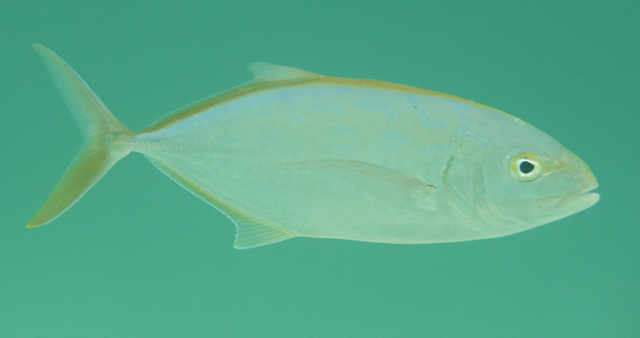| Carangidae (Jacks and pompanos), subfamily: Caranginae |
| 100 cm TL (male/unsexed); max.weight: 14 kg |
|
reef-associated; depth range 0 - 50 m |
| Western Atlantic: Massachusetts (USA) and Bermuda, through the Gulf of Mexico and the Caribbean to São Paulo, Brazil (Ref. 57756). Eastern Central Atlantic: St. Paul's Rocks (Ref. 13121). |
|
Dorsal spines (total): 8-9; Dorsal soft rays (total): 25-28; Anal spines: 2-3; Anal soft rays: 22-25. Upper jaw does not reach to anterior margin of eye. Juveniles have about 5 vertical dark bars on body. |
| Adults prefer offshore reefs (Ref. 9710) and open marine waters (Ref. 26938). Juveniles often found near the shore on seagrass beds or often associated jellyfish or floating Sargassum (Ref. 5217). Generally solitary but sometimes seen in small groups (Ref. 26235). They feed on small fishes (Ref. 26235). Spawning occurs offshore from February to October (Ref. 26938). Flavor considered fair to good (Ref. 5521). |
|
(Ref. 96402)
|
| reports of ciguatera poisoning |
|
Source and more info: www.fishbase.org. For personal, classroom, and other internal use only. Not for publication.
Page created by Jen, 05.08.02,
php script by kbanasihan 06/09/2010 ,
last modified by
dsantos, 20/08/10

